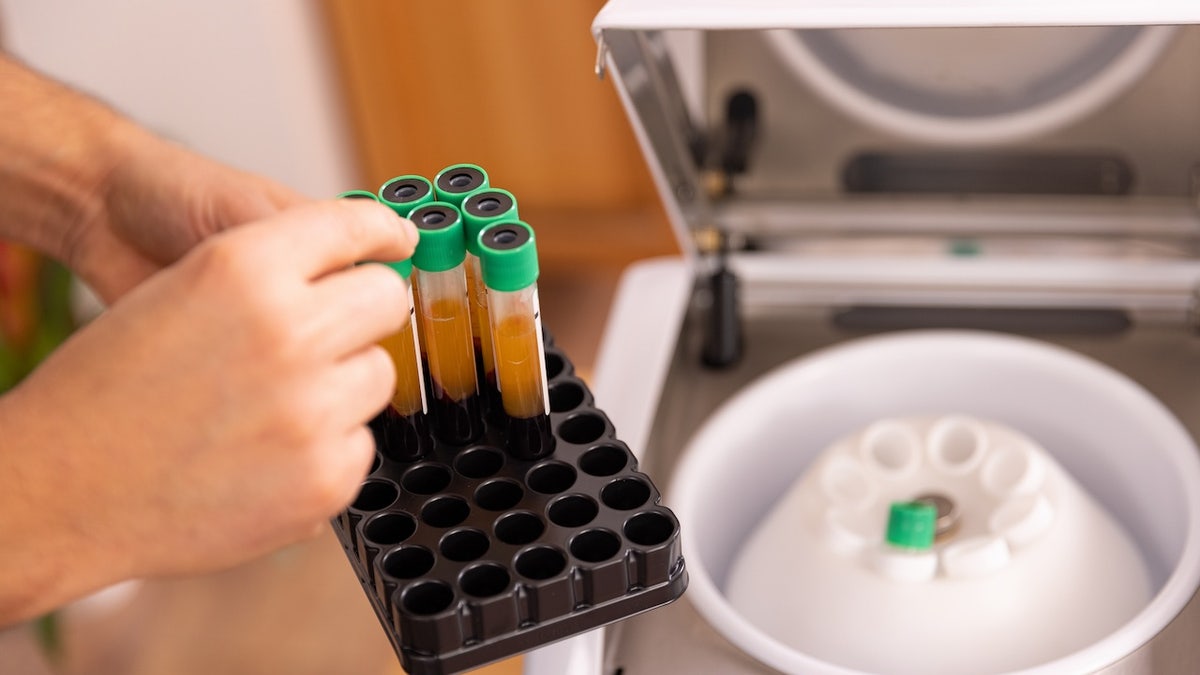With about one million people living with Parkinson’s disease in the United States and 90,000 diagnoses each year, the race continues for a care.
Researchers at the Sloan Kettering Cancer Center (MSK) researchers have announced the advances on this front: they have developed a new therapy that uses stem cells to treat the advanced Parkinson’s Parkinson’s.
In phase 1 trial, researchers used donated stem cells (drawn from initial phase embryos) to create nerve cells (neurons) and transplanted to the brain of 12 Parkinson’s patients, according to a statement from MSK.
New Parkinson’s medication that is shown effective in clinical trials: “very lively”
Once the cells are injected, they produce dopamine, a hormone in the brain that helps movement and coordination.
(One of Parkinson’s badge is the low levels of dopamine, which causes the typical symptoms of tremors, rigidity, balance problems and difficulty walking.)
Around one million people live with Parkinson’s disease in the United States, with 90,000 new diagnoses each year. (Istock)
After 18 months, the injected cells had “taken the brain without serious side effects,” the researchers reported.
From the MDS-UPDRs (a scale of qualifications for the symptoms developed by the International Parkinson and the Movement Disorders Society), participants experienced “notable improvements”, especially the group that received a higher dose.
Patients in the group of high doses reported 2.7 hours of additional “time” each day.
“Neurologists say things are usually worsened a little every year with this disease, which means that the score increases a few points,” said the co -author of the Lorenz Studer studio, MD, director of the Center for Biology of MSK cells, in the statement.
“In our study, not only the score did not get worse, but it dropped by more than 20 points in the group of high doses.”

Researchers used donated stem cells (drawn from initial phase embryos) to create nerve cells (neurons) and transplanted them in the brain of 12 Parkinson’s patients. (Istock)
On average, patients in the group of high doses reported 2.7 hours of additional “timely”, indicating normal functioning periods with minimal symptoms-“a result that could be quite significant for their daily lives,” said Studer.
Given the success of phase 1 trial, the United States Food and Drug Administration has granted approval for researchers to go directly to a clinical trial of phase 3 in a much larger group of patients, around 100 people, which will take place in the first half of 2025.
The findings were published in the journal Nature.
Parkinson
“The study showed that the development of specific nerve cells from human embryonic stem cells in the laboratory, then injecting -in the brain of people with Parkinson’s disease, is safe and has a significant promise as possible future treatment,” said Viviane Tabar, MD, MD, MD, Chair of the Department of Sloan Kettering Center Memorial Memorial. Digital news.
“The findings were rewarding, as this work is more than a dozen years in the realization.”
“Greater Step forward”
Dr. Mary Ann Picone, medical director of the MS Holy Name Medical Center in Teaneck, Nova Jersey, said that cells for the treatment of Parkinson’s disease could offer potential not only to slow down disability, but also to stop progression and lead to improving engine function.
“Although there is a risk involved in the necessary immune suppression before the implantation of stem cells and the procedure itself, it would be an important step forward to replace the dopaminergic neurons lost in the disease,” said Picone, who was not involved in the study, told Fox News Digital.
Click here to get the Fox News app
Levodopa, currently the first-line treatment for Parkinson, is limited that patients need a larger amount of dosing as time goes on, according to Picone-“and regulation and stiffness or disquine periods (non-controlled muscle movements) becomes more difficult.”

After 18 months, the injected cells had “taken the brain without serious side effects,” the researchers reported. (Istock)
Ann Murray, director of movement disorders of the WVU Rockefeller Neuroscience Institute in Virginia in the West, referred to the studio as “incredibly exciting” for Parkinson’s patients.
“Although the purpose of this particular research project was to ensure security, to make the UPDRS significant clinical improvement absolutely innovative,” Murray told Fox News Digital. (Nor was it involved in the study.)
Click here to register -you are in our health newsletter
“This is only the first step in obtaining this type of therapy approved for patients suffering from Parkinson’s disease, but this is an amazing first step in the potential benefits of brain therapy of stem cells.”
Potential limitations
There were some limitations associated with the studio, said Tabar.
“This is a small study designed to show security: it is essential to carry out a larger and well -controlled study to show that the treatment works effectively, otherwise called the Efficiency Study of Phase 3,” he said.
“This is an amazing first step in the potential benefits of brain therapy of stem cells.”
These first findings, however, are “suggestive of a strong promise.”
“I think we can finally say that stem cells, when they are derived and differ properly, maintain a great promise to repair their brain in Parkinson’s and potentially under other conditions someday,” said Tabar.
For more health items, visit www.foxnews.com/health
Cell therapy developed in MSK and graduated from Bluerock Therapeutics in Massachusetts, which funded the study.
#Parkinsons #stem #cell #therapy #shows #strong #promise #relieve #symptoms
Image Source : www.foxnews.com
